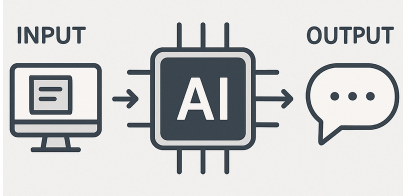


Nothing will ever be the same again.
Artificial Intelligence — AI — is here to stay.
As leaders, our responsibility is clear:
We must guide this development in service of what is human, not what is superhuman.
In the year of our Lord, 2025 — the year Pope Leo XIV was elected, Donald Trump led the U.S. under a new MAGA term, and Putin still dreamt of a full-scale occupation of Ukraine — things were already happening behind the scenes.
Things that would change everything. Forever.
The key concepts to understand are:
Machine Learning. Artificial Intelligence. Superintelligence.
What started out innocently — with translation tools and language apps — gained speed with ChatGPT, and evolved rapidly among the most resourceful players into machines and programs that learn from their own learning. So quickly, in fact, that few can keep up — let alone control what’s unfolding.
Yes, it sounds frightening. – But it can also be deeply tempting:
To shape the new world order, rather than become slaves to it.
I choose the latter.
That means becoming conscious of our roots as human beings — our needs, our inner resources, and our values. – What serves creation and ecological balance will serve humanity. – What destroys that balance, or undermines our fragile human essence, must be resisted — in partnership with the best that new intelligence can offer.
Because we would make mistakes: Machines will not be neutral. – Just like in the human mind: Good and evil will battle for control inside the programs that shape the future.
An organisation utilising AI can be structured in different ways. The most common models include:
Decentralized AI usage
AI is applied across various departments, but there is no
central unit managing the
overall AI strategy.
Centralized AI team:
A dedicated AI unit develops
models and solutions for the
entire organisation.
Hybrid model:
AI expertise is concentrated in a central unit, while solutions are implemented directly within
different business areas.
or any other system. – We must choose — or create — our own intelligence bubbles, aligned with the values and visions we hold for a good life.
In the coming years, competing knowledge universes will vie for global and even interplanetary influence. A digital elite will maintain the systems.
Wars will no longer be fought on battlefields, but by machines — robots guided by algorithms that choose and act according to their own logic, values, and ambitions.
It may, paradoxically, free up vast amounts of time and resources.
We are hurtling toward a “One-Third Society” — where one-third governs and controls, one-third is either growing up or nearing the end of life… and the rest of us — those in the middle — may suddenly find ourselves gifted with time.
in contrast to cold technology and superintelligent forces.
In the meantime, we must lead this transition.
With thoughtful strategies — like the SGL model, perhaps — we must rethink how we organize our systems, our communities, and our leadership.
Strategic Leadership
Chief AI Officer (CAIO):
Leads the organisation’s AI strategy, ensuring alignment with overall business objectives.
Chief Data Officer (CDO):
Responsible for data governance, data quality, and the organization’s data infrastructure.
AI Ethics & Compliance Officer:
Ensures that the use of AI aligns with the company’s core values, legal requirements, ethical guidelines, and regulatory standards.
Executive Coach Officer (ECO):
Leads an HR unit dedicated to group coaching and mentoring, grounded in compassion and human-centered development.
AI/ML Engineers:
Design, develop, and implement machine learning models and AI systems.
Data Scientists:
Analyse data, build predictive models, and refine algorithms to support decision-making and innovation.
Data Engineers:
Manage data architecture, data pipelines, and ensure integration between data systems and AI applications.
MLOps Engineers:
Automate, scale, and monitor machine learning models in production environments, ensuring reliability and performance.
